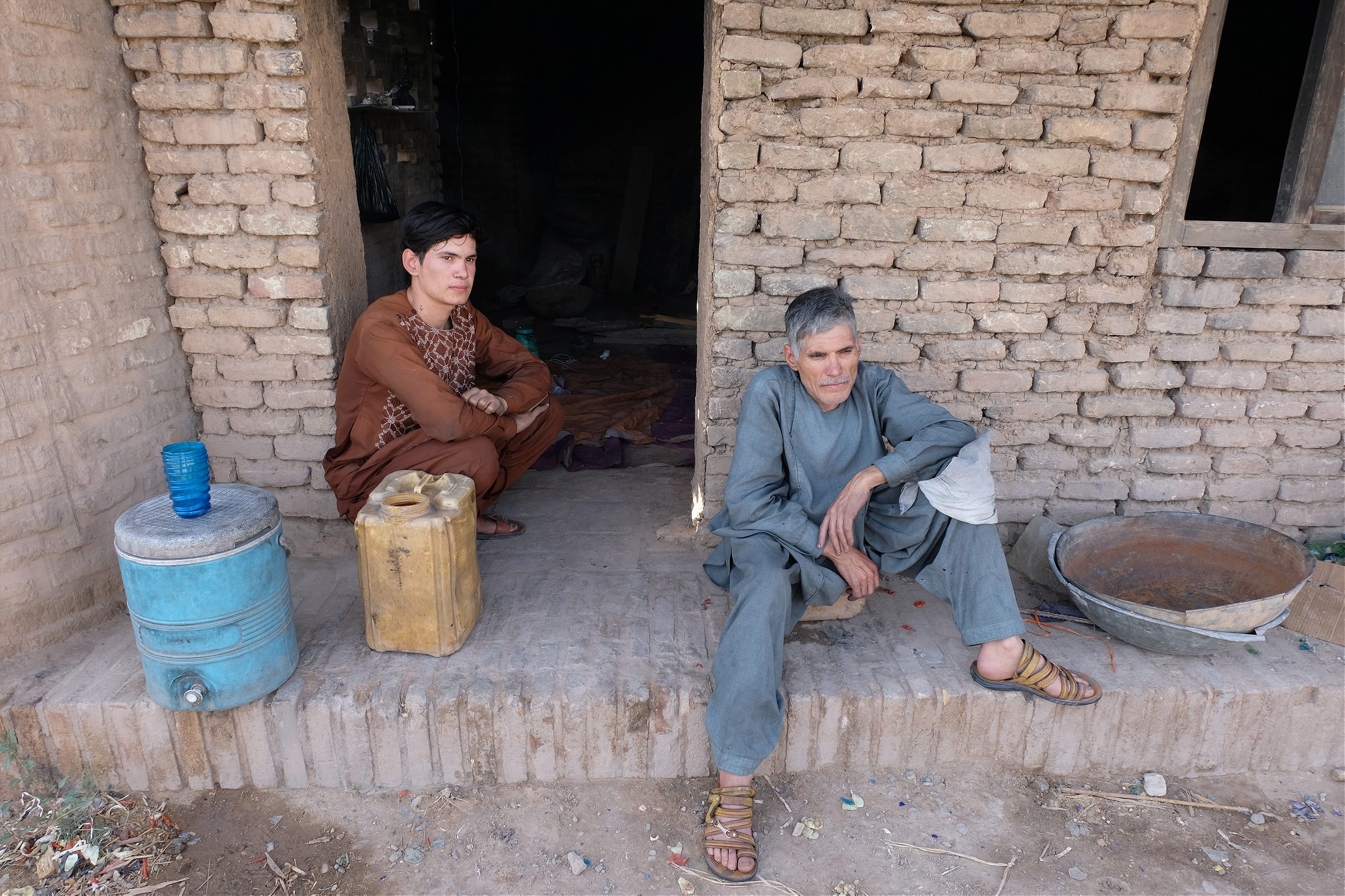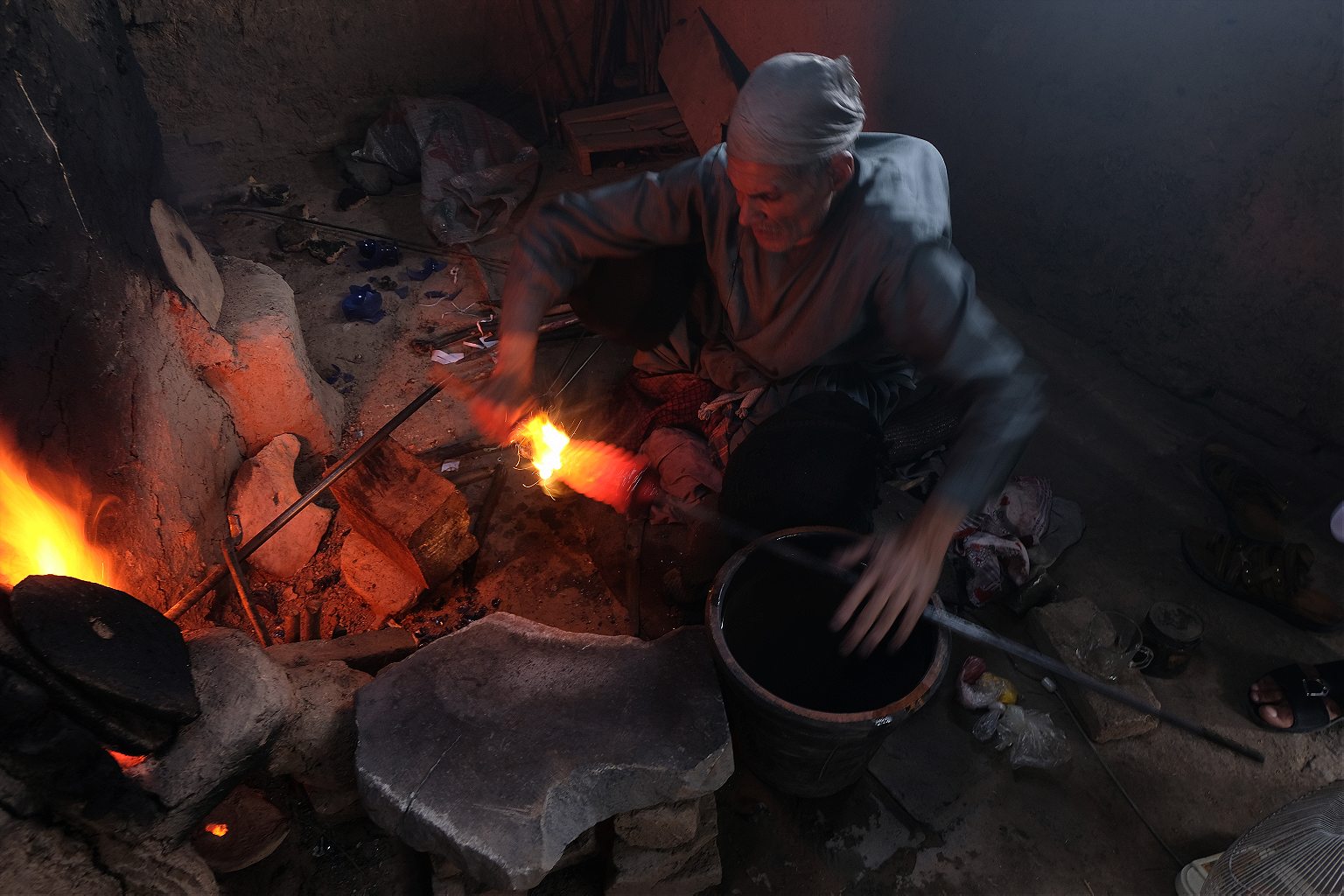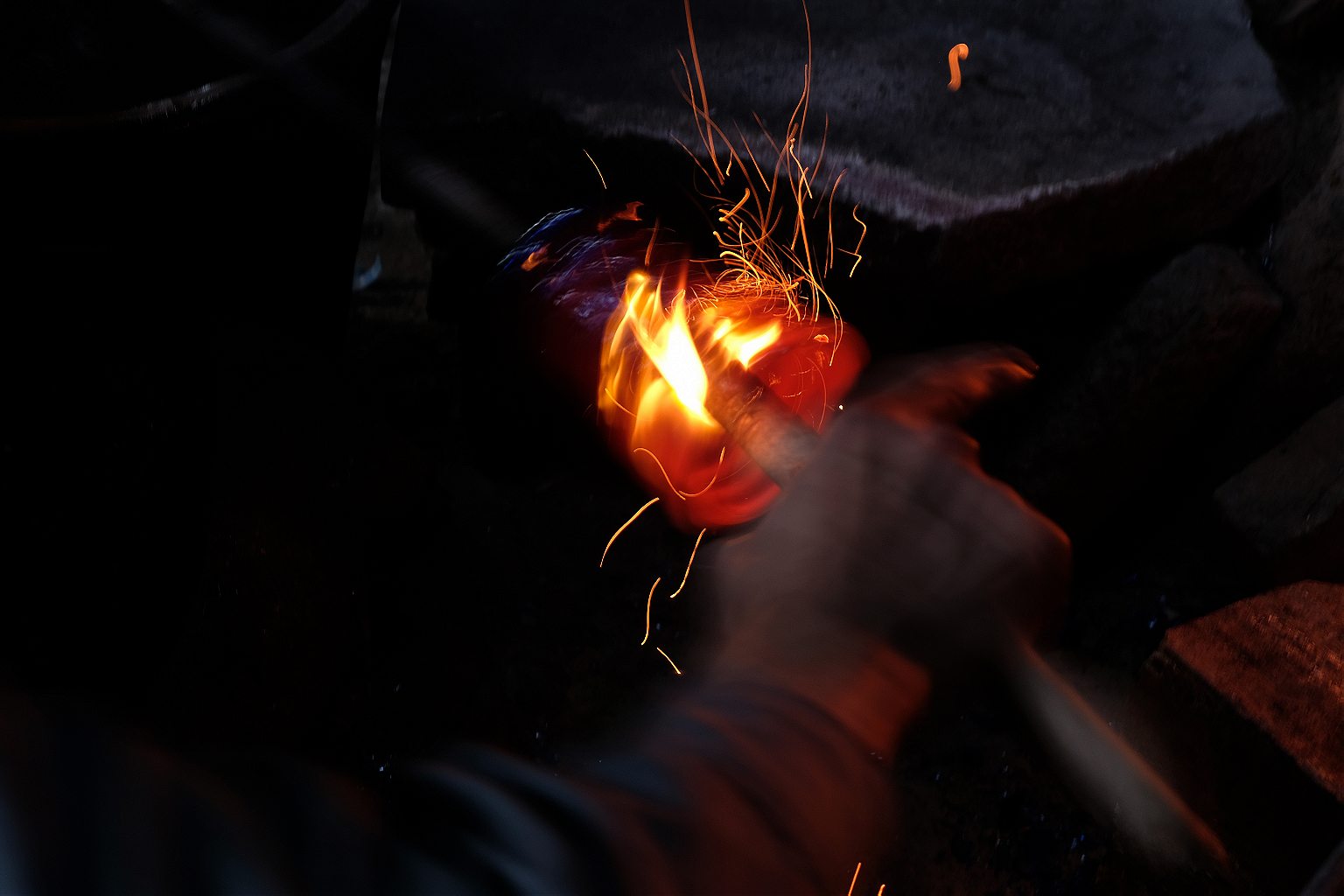For over 200 years, glassmaking has been central to the ancient Afghan city of Herat. But a dwindling market and the decline of foreign visitors means the craft might die with this father and son.
As the temperature in the small mud-lined room rises to stifling degrees, Gholam Sakhi’s focus remains on the billowing fire in front of him. Bursts of smoke turn the walls into ashen black, the emanating heat from the igloo-shaped furnace engulfs the room, but the 45-year-old glass blower never turns away—instead, he leans into the heat.
While visitors—policemen, nearby shopkeepers, and tour guides—marvel at the way he holds and maneuvers the scorching blowpipe in his hands to form colorful works of glass art, the Sakhi’s precision doesn’t falter.
Sakhi’s every movement, each twist of the wrist, is intentional. To watch him at work—flames hidden in a giant furnace turning into globules of blue, green, and yellow glass—is to witness a craft that is both mechanical in its repetition and artistic in its unpredictability.
The skills Sakhi employs have been passed down through dozens of generations of glass blowers in the western Afghanistan city of Herat. But due to a lack of local interest in learning the craft, a decrease in demand, and the loss of the foreign customers on whom artists like Sakhi have relied to make a living, he might be one of Herat’s last glass artists.
“He knows what he’s making once he feels the blowpipe in the fire,” Habibullah, Sakhi’s 18-year-old son, explains to the men who were drawn there by the furnace’s smoke rising into the air.

“Watch how he moves his hands, that determines the shape of the object,” Habibullah says of the instinctual nature of their family trade. The comfort both men feel around the fire—which can exceed 1,200 degrees celsius (2192 degrees Fahrenheit)—is the result of the more than 51 years of experience between them. But that half-century is only a fraction of the time the men in their family have been carrying on the tradition. Over the course of more than 200 years, fathers in this part of Afghanistan have taught their sons the skills to build an unshakable relationship with the fire.
Though it has led to a multitude of health concerns—breathing problems, deterioration of eyesight and a generally weak frame—across generations of men in their family, the fire, and the works of art that come from it, have become part of their DNA. It defines them.
Related Reads
“My father was taught by his father. My father taught me, and I taught my son,” said Gholam Sakhi, who was only seven when he was handed his first blowpipe. At the time, there were a handful of other glassmakers with their own furnaces; today there are only two, Gholam Sakhi and Habibullah—his two other sons left the trade as they got older. Habibullah was even younger, just five years old, when he first attempted the trade that has been passed down through eight generations of their family.
Gholam Sakhi says his youngest son, the one-year-old Safihullah, plays in the room while his father and brother work.
“He runs around here like it’s nothing,” Gholam Sakhi says, proudly.
“If you want to accomplish something, you can’t let fear stand in the way. It’s the same with the fire.”
Habibullah, who says his little brother “has more courage than all the grown men” that walk into their simple studio, sees comfortability around the fire as just another part of growing up in the family. He would have been more surprised if his little brother felt fear or hesitation around the fire. As a child, he himself was never afraid of the flames. From a young age he knew “it’s what we do.”
“If you want to accomplish something, you can’t let fear stand in the way. It’s the same with the fire,” Habibullah says as his father swings the blowpipe, with a bright orange molten glass globule hanging from it, into the air.
Their family’s tradition is inextricably tied to the cultural tradition of the ancient city—Afghanistan’s third-largest—their family has called home over hundreds of years.
The rocks and plants they use to produce the different colors of glass are gathered from an area near the 22-arched Malan Bridge, a structure that dates back to at least the 12th century. The blowpipes are made from sawn-off rifle barrels, a commodity that’s all too easy to find in a city that has survived invasions by everyone from Alexander the Great and Genghis Khan to the Soviet Union and NATO. Their simple, mud-lined studio, once housed near the city’s iconic blue-tiled Grand Mosque, has now been relocated to a small, arched room in Herat’s famous citadel, said to have been built by the forces of Alexander and initially damaged by Genghis Khan’s armies.
From start to finish, their work is unmistakably Herati.


There may be a deep connection between their art and the city they live in, but the two men say their own efforts, and decades spent toiling in front of the furnace, has earned them very little both in terms of recognition and money.
Though people may stop by their studio to watch them work, few buy their goods, and when they do, it’s from ornate stores in Herat and Kabul, where the markups lead to great profits for the store owners, but Gholam Sakhi and Habibullah still live in a rented house not far from their studio.
Haji Sultan Ahmad, who runs the glass shop that sells Gholam Sakhi and Habibullah’s works, across from Herat’s grand mosque, says his family has been involved in the sale of glass for more than 60 years now.
In Herat a single vase can sell for 300 Afghanis ($4.12), in Kabul the price jumps to 500 Afghanis ($6.86), but Gholam Sakhi and Habibullah receive only about $27 for a day’s work. The two men do make custom designs directly for local buyers, but they say those who can afford the pieces prefer imported goods.
“They like things from Turkey and Dubai, no one respects our work anymore,” says Gholam Sakhi.
The closing of foreign military bases, NGOs, and media offices since the 2014 international troop withdrawal have also had a major impact on their business. Ever since Afghanistan had been part of the so-called “hippie trail” from the 1950s until the Soviet occupation of 1979, the men of Gholam Sakhi’s family have been reliant on money from foreign tourists. In the lean years of the Soviet occupation and civil war, Gholam Sakhi, who never attended proper school, traveled to neighboring Iran and Pakistan to work as a glassmaker.
His own lack of literacy and reliant on what he believes is a dying trade is why he insisted that his children attend school. Habibullah has studied until the eighth grade, but eventually had to devote himself to the family business.
Now, with the market dwindling, and the lack of interest among others to learn the art of glassmaking, the two men fear that the craft will die along with them.
“There is no one else in this country who can do this,” Gholam Sakhi said, “and when we’re gone, it may be the end of glassmaking in Herat forever.”






